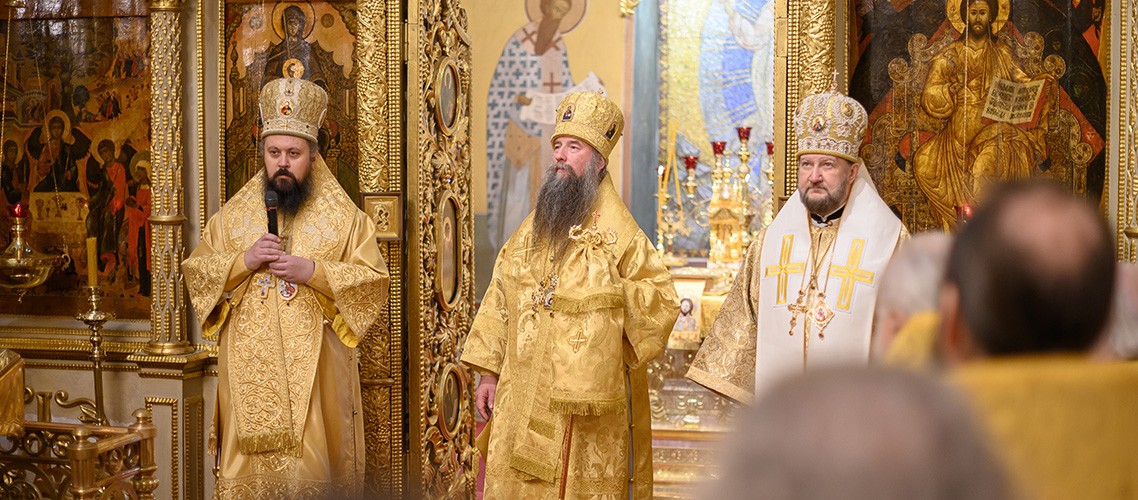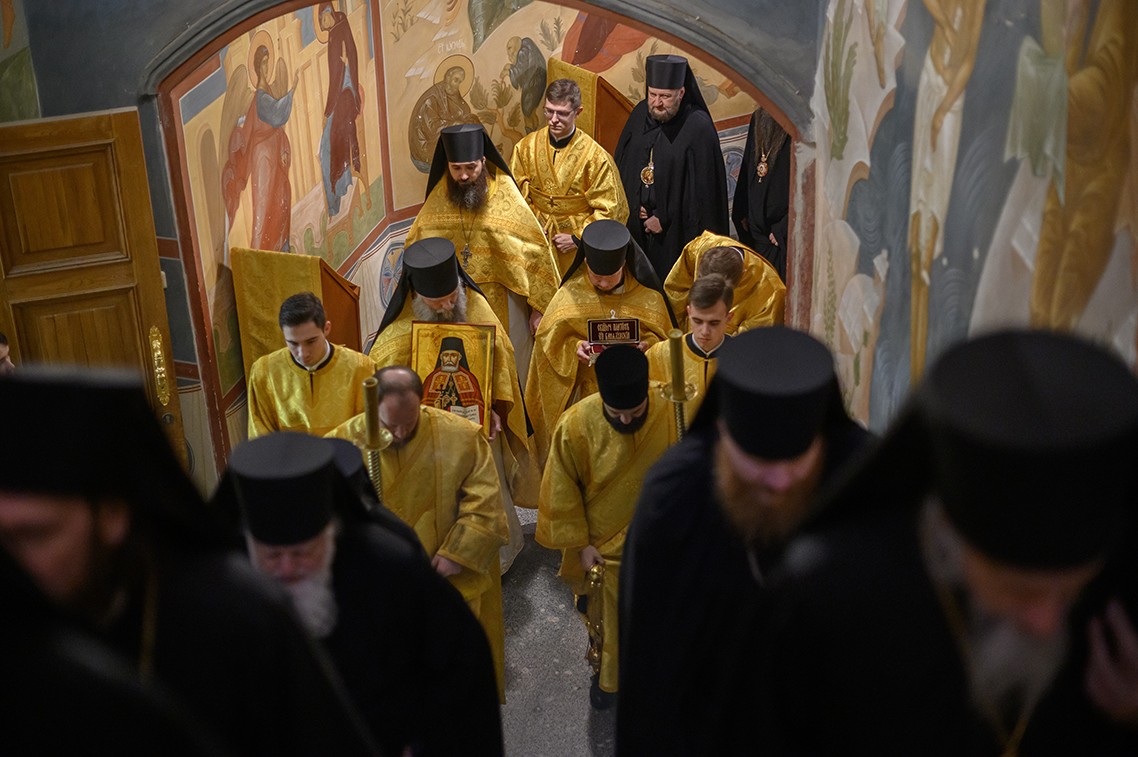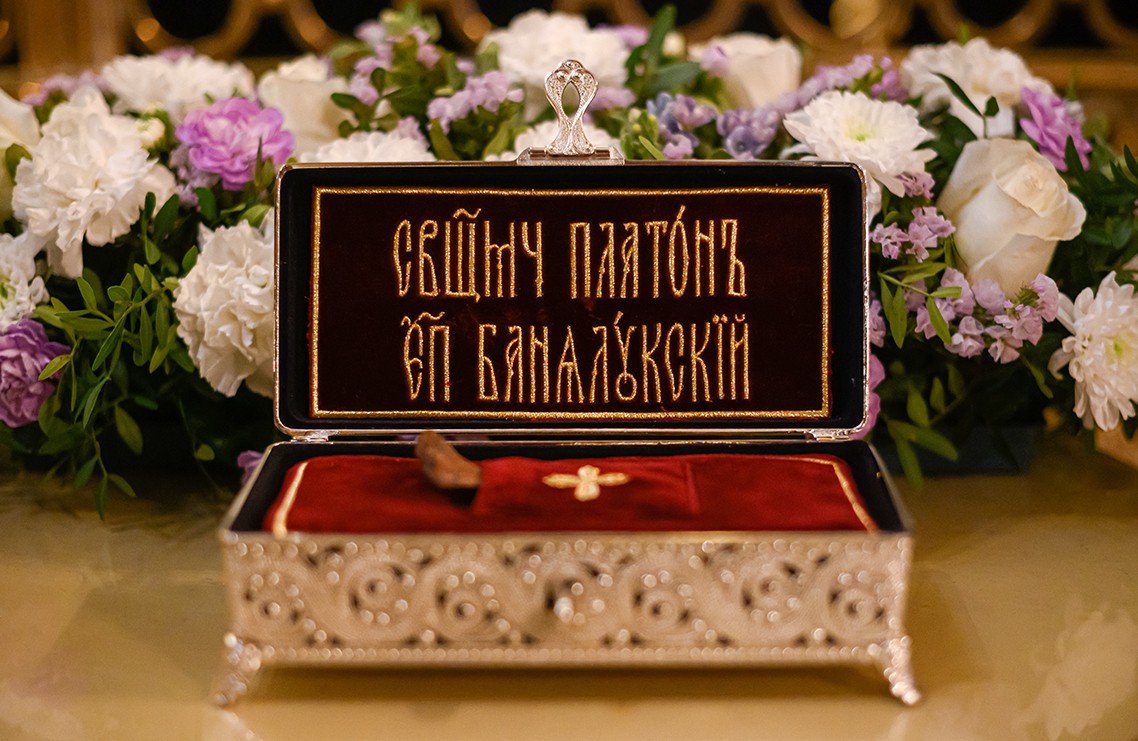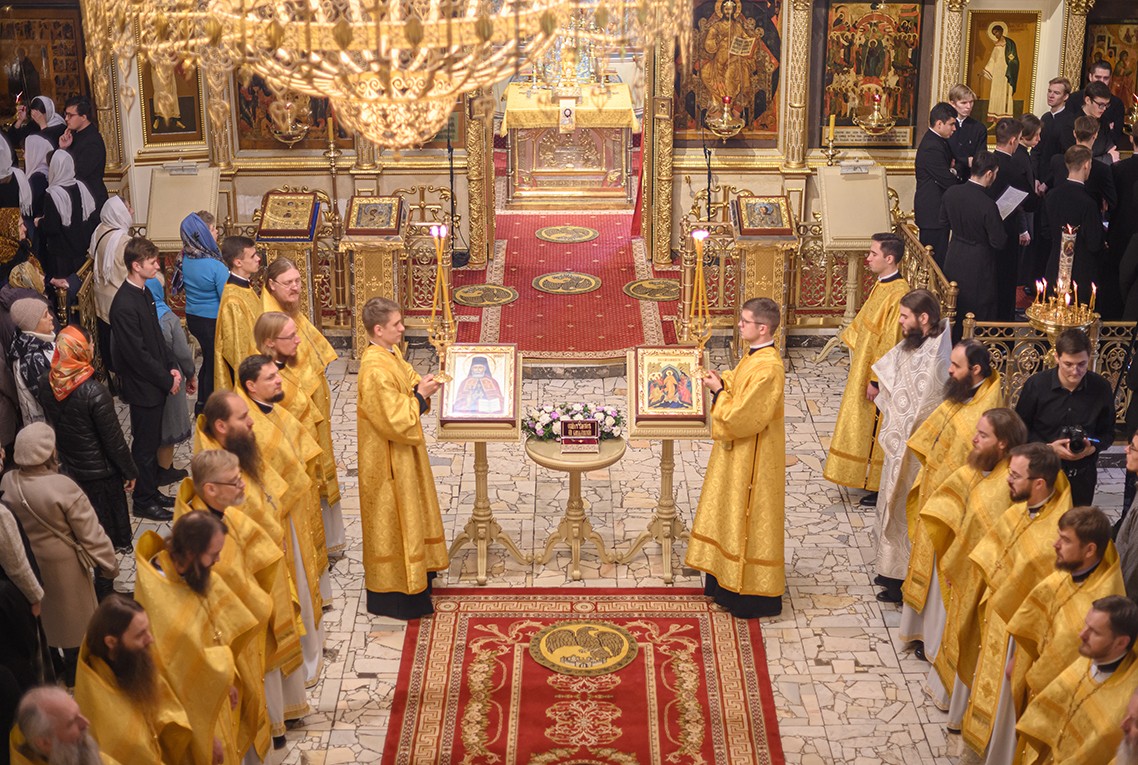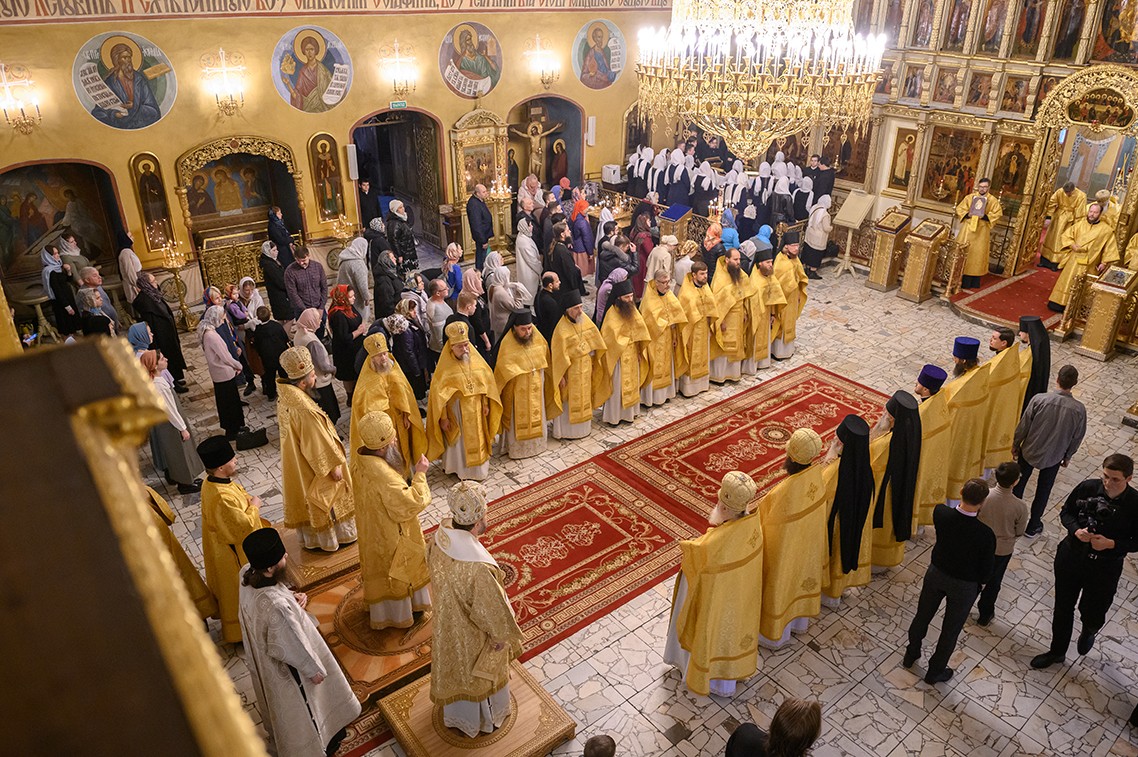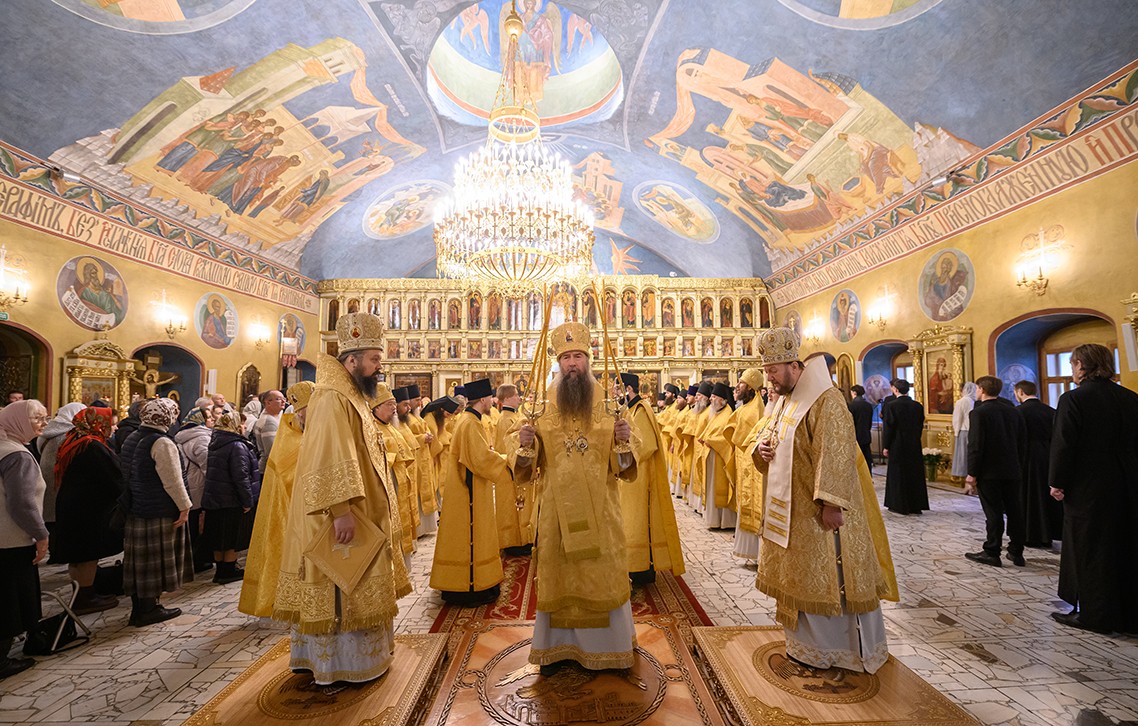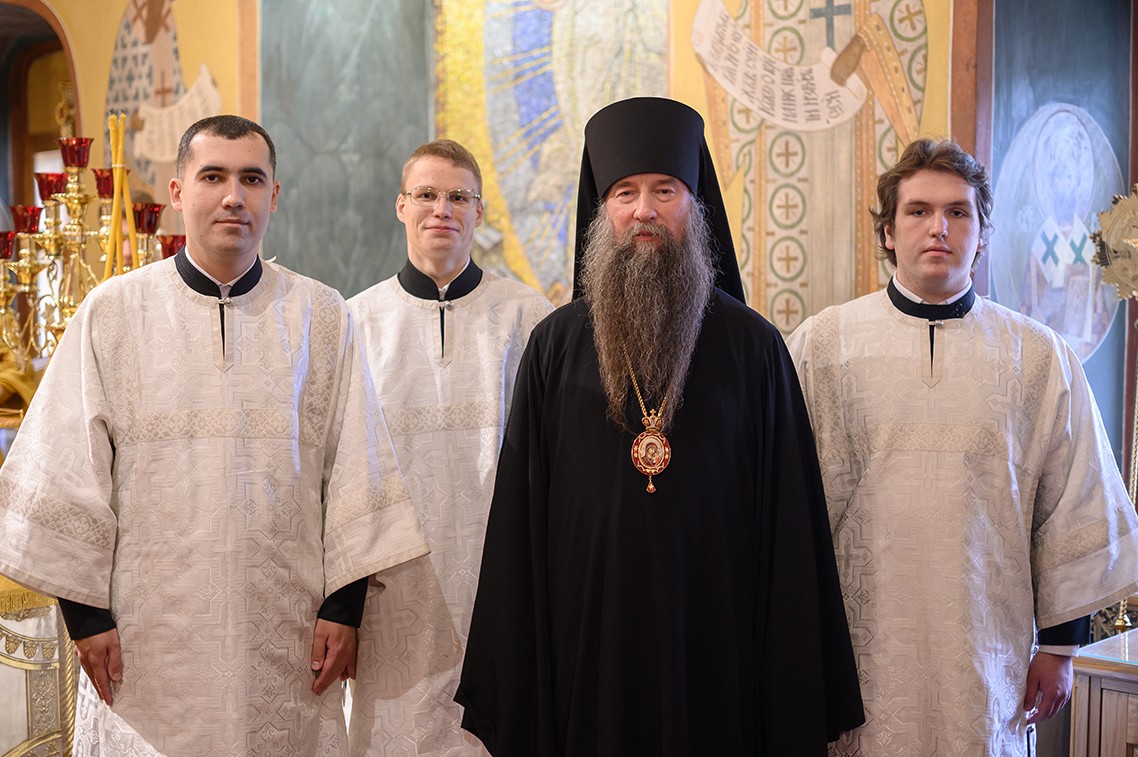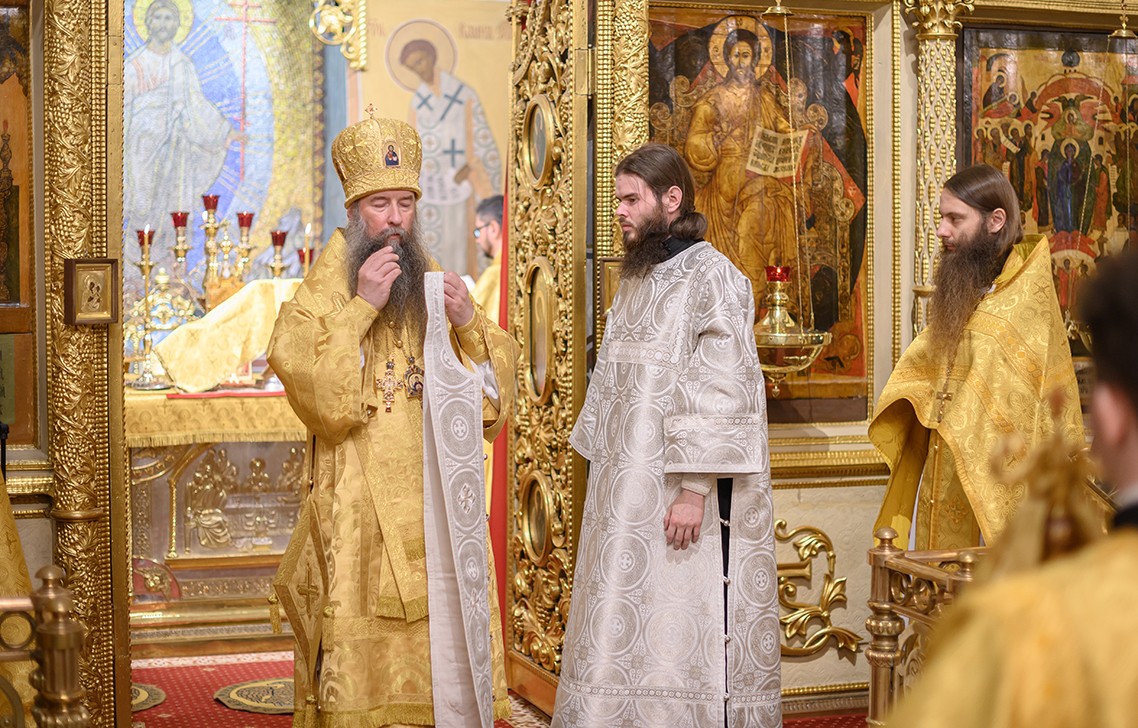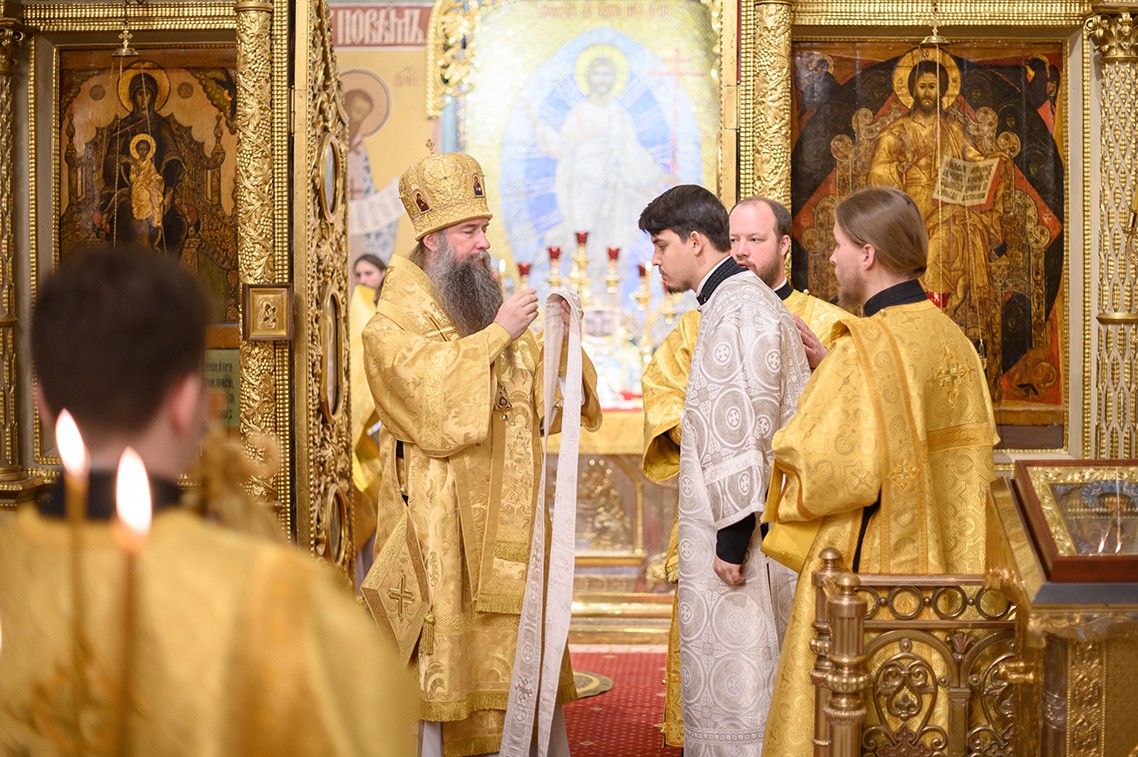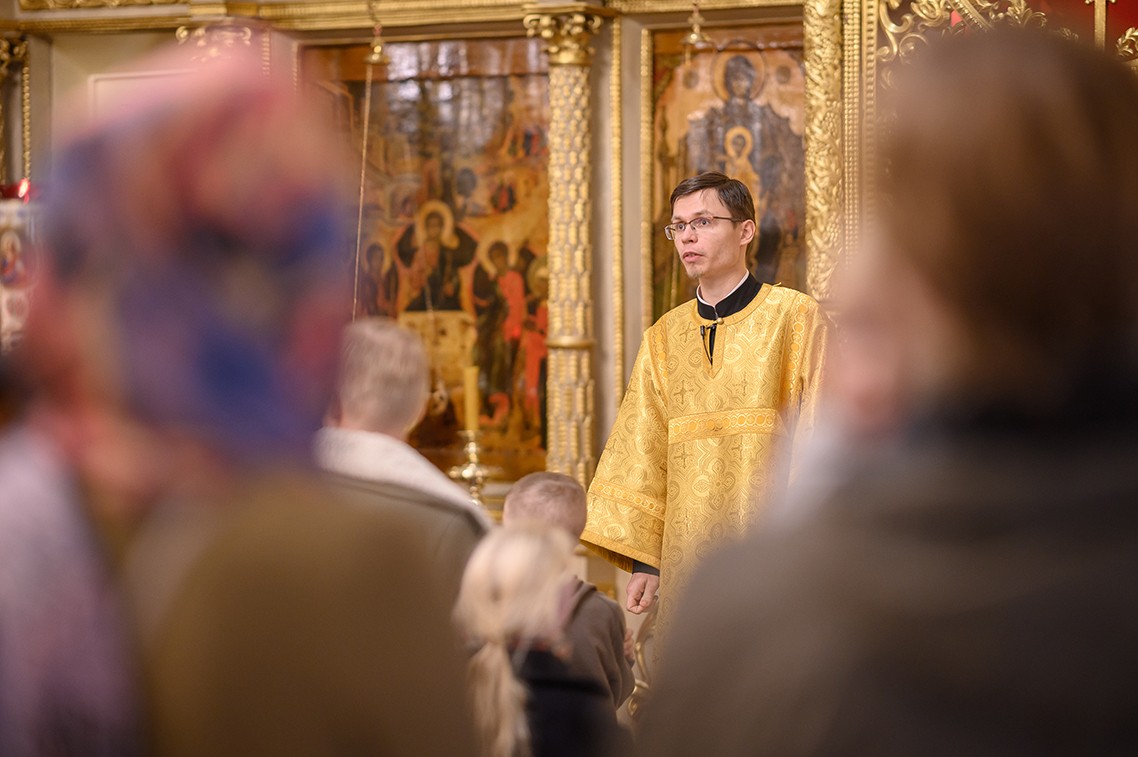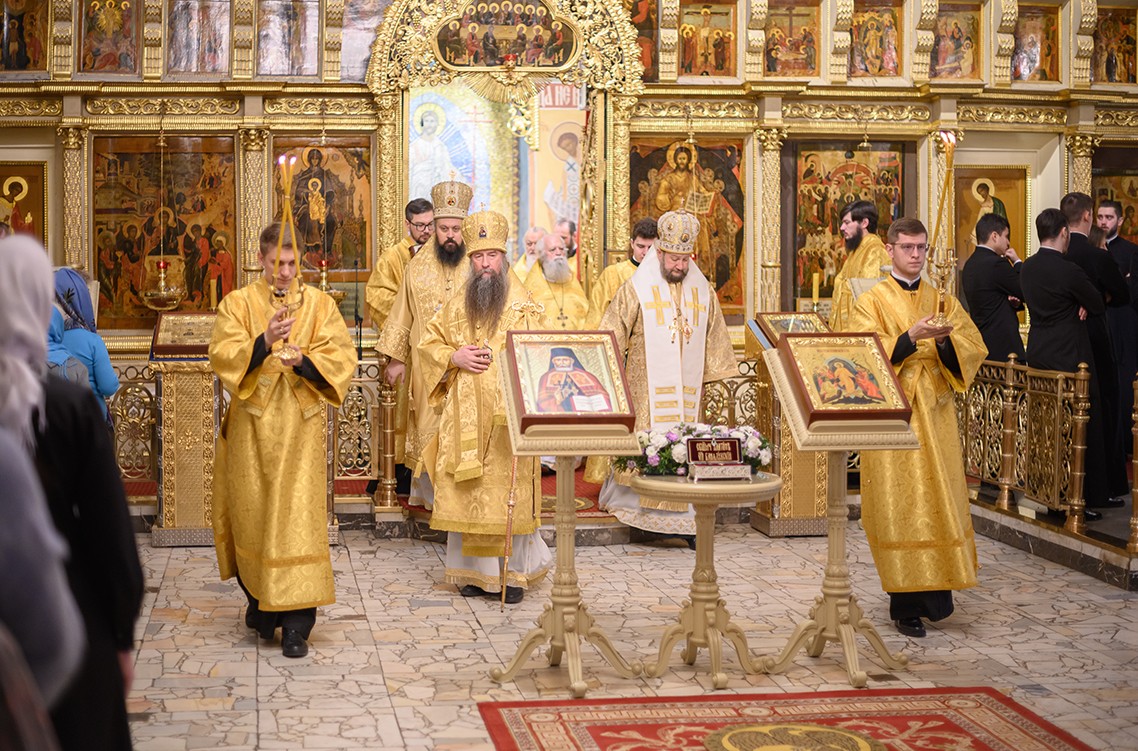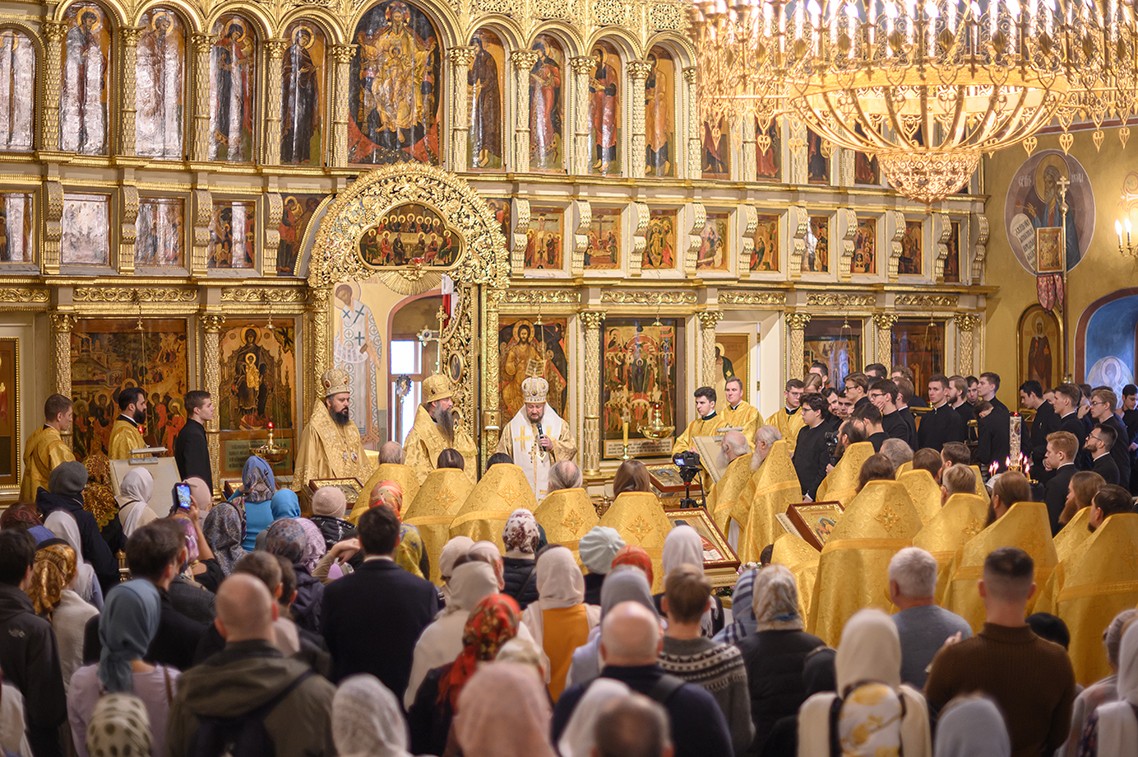
4-5 ноября 2022, Неделя 22-я по Пятидесятнице. Передача МДА мощей сщмч. Платона Баня-Лукского / 4-5 November 2022, 22nd Sunday after Pentecost. Transfer of a part of relics of Hieromartyr Platon of Banja Luka to the MThA

4-5 ноября 2022, Неделя 22-я по Пятидесятнице. Передача МДА мощей сщмч. Платона Баня-Лукского / 4-5 November 2022, 22nd Sunday after Pentecost. Transfer of a part of relics of Hieromartyr Platon of Banja Luka to the MThA

4-5 ноября 2022, Неделя 22-я по Пятидесятнице. Передача МДА мощей сщмч. Платона Баня-Лукского / 4-5 November 2022, 22nd Sunday after Pentecost. Transfer of a part of relics of Hieromartyr Platon of Banja Luka to the MThA

4-5 ноября 2022, Неделя 22-я по Пятидесятнице. Передача МДА мощей сщмч. Платона Баня-Лукского / 4-5 November 2022, 22nd Sunday after Pentecost. Transfer of a part of relics of Hieromartyr Platon of Banja Luka to the MThA

4-5 ноября 2022, Неделя 22-я по Пятидесятнице. Передача МДА мощей сщмч. Платона Баня-Лукского / 4-5 November 2022, 22nd Sunday after Pentecost. Transfer of a part of relics of Hieromartyr Platon of Banja Luka to the MThA

4-5 ноября 2022, Неделя 22-я по Пятидесятнице. Передача МДА мощей сщмч. Платона Баня-Лукского / 4-5 November 2022, 22nd Sunday after Pentecost. Transfer of a part of relics of Hieromartyr Platon of Banja Luka to the MThA

4-5 ноября 2022, Неделя 22-я по Пятидесятнице. Передача МДА мощей сщмч. Платона Баня-Лукского / 4-5 November 2022, 22nd Sunday after Pentecost. Transfer of a part of relics of Hieromartyr Platon of Banja Luka to the MThA

4-5 ноября 2022, Неделя 22-я по Пятидесятнице. Передача МДА мощей сщмч. Платона Баня-Лукского / 4-5 November 2022, 22nd Sunday after Pentecost. Transfer of a part of relics of Hieromartyr Platon of Banja Luka to the MThA

4-5 ноября 2022, Неделя 22-я по Пятидесятнице. Передача МДА мощей сщмч. Платона Баня-Лукского / 4-5 November 2022, 22nd Sunday after Pentecost. Transfer of a part of relics of Hieromartyr Platon of Banja Luka to the MThA

4-5 ноября 2022, Неделя 22-я по Пятидесятнице. Передача МДА мощей сщмч. Платона Баня-Лукского / 4-5 November 2022, 22nd Sunday after Pentecost. Transfer of a part of relics of Hieromartyr Platon of Banja Luka to the MThA

4-5 ноября 2022, Неделя 22-я по Пятидесятнице. Передача МДА мощей сщмч. Платона Баня-Лукского / 4-5 November 2022, 22nd Sunday after Pentecost. Transfer of a part of relics of Hieromartyr Platon of Banja Luka to the MThA

4-5 ноября 2022, Неделя 22-я по Пятидесятнице. Передача МДА мощей сщмч. Платона Баня-Лукского / 4-5 November 2022, 22nd Sunday after Pentecost. Transfer of a part of relics of Hieromartyr Platon of Banja Luka to the MThA

4-5 ноября 2022, Неделя 22-я по Пятидесятнице. Передача МДА мощей сщмч. Платона Баня-Лукского / 4-5 November 2022, 22nd Sunday after Pentecost. Transfer of a part of relics of Hieromartyr Platon of Banja Luka to the MThA

4-5 ноября 2022, Неделя 22-я по Пятидесятнице. Передача МДА мощей сщмч. Платона Баня-Лукского / 4-5 November 2022, 22nd Sunday after Pentecost. Transfer of a part of relics of Hieromartyr Platon of Banja Luka to the MThA

4-5 ноября 2022, Неделя 22-я по Пятидесятнице. Передача МДА мощей сщмч. Платона Баня-Лукского / 4-5 November 2022, 22nd Sunday after Pentecost. Transfer of a part of relics of Hieromartyr Platon of Banja Luka to the MThA

4-5 ноября 2022, Неделя 22-я по Пятидесятнице. Передача МДА мощей сщмч. Платона Баня-Лукского / 4-5 November 2022, 22nd Sunday after Pentecost. Transfer of a part of relics of Hieromartyr Platon of Banja Luka to the MThA

4-5 ноября 2022, Неделя 22-я по Пятидесятнице. Передача МДА мощей сщмч. Платона Баня-Лукского / 4-5 November 2022, 22nd Sunday after Pentecost. Transfer of a part of relics of Hieromartyr Platon of Banja Luka to the MThA

4-5 ноября 2022, Неделя 22-я по Пятидесятнице. Передача МДА мощей сщмч. Платона Баня-Лукского / 4-5 November 2022, 22nd Sunday after Pentecost. Transfer of a part of relics of Hieromartyr Platon of Banja Luka to the MThA

4-5 ноября 2022, Неделя 22-я по Пятидесятнице. Передача МДА мощей сщмч. Платона Баня-Лукского / 4-5 November 2022, 22nd Sunday after Pentecost. Transfer of a part of relics of Hieromartyr Platon of Banja Luka to the MThA

4-5 ноября 2022, Неделя 22-я по Пятидесятнице. Передача МДА мощей сщмч. Платона Баня-Лукского / 4-5 November 2022, 22nd Sunday after Pentecost. Transfer of a part of relics of Hieromartyr Platon of Banja Luka to the MThA

4-5 ноября 2022, Неделя 22-я по Пятидесятнице. Передача МДА мощей сщмч. Платона Баня-Лукского / 4-5 November 2022, 22nd Sunday after Pentecost. Transfer of a part of relics of Hieromartyr Platon of Banja Luka to the MThA

4-5 ноября 2022, Неделя 22-я по Пятидесятнице. Передача МДА мощей сщмч. Платона Баня-Лукского / 4-5 November 2022, 22nd Sunday after Pentecost. Transfer of a part of relics of Hieromartyr Platon of Banja Luka to the MThA

4-5 ноября 2022, Неделя 22-я по Пятидесятнице. Передача МДА мощей сщмч. Платона Баня-Лукского / 4-5 November 2022, 22nd Sunday after Pentecost. Transfer of a part of relics of Hieromartyr Platon of Banja Luka to the MThA

4-5 ноября 2022, Неделя 22-я по Пятидесятнице. Передача МДА мощей сщмч. Платона Баня-Лукского / 4-5 November 2022, 22nd Sunday after Pentecost. Transfer of a part of relics of Hieromartyr Platon of Banja Luka to the MThA

4-5 ноября 2022, Неделя 22-я по Пятидесятнице. Передача МДА мощей сщмч. Платона Баня-Лукского / 4-5 November 2022, 22nd Sunday after Pentecost. Transfer of a part of relics of Hieromartyr Platon of Banja Luka to the MThA

4-5 ноября 2022, Неделя 22-я по Пятидесятнице. Передача МДА мощей сщмч. Платона Баня-Лукского / 4-5 November 2022, 22nd Sunday after Pentecost. Transfer of a part of relics of Hieromartyr Platon of Banja Luka to the MThA

4-5 ноября 2022, Неделя 22-я по Пятидесятнице. Передача МДА мощей сщмч. Платона Баня-Лукского / 4-5 November 2022, 22nd Sunday after Pentecost. Transfer of a part of relics of Hieromartyr Platon of Banja Luka to the MThA

4-5 ноября 2022, Неделя 22-я по Пятидесятнице. Передача МДА мощей сщмч. Платона Баня-Лукского / 4-5 November 2022, 22nd Sunday after Pentecost. Transfer of a part of relics of Hieromartyr Platon of Banja Luka to the MThA

4-5 ноября 2022, Неделя 22-я по Пятидесятнице. Передача МДА мощей сщмч. Платона Баня-Лукского / 4-5 November 2022, 22nd Sunday after Pentecost. Transfer of a part of relics of Hieromartyr Platon of Banja Luka to the MThA

4-5 ноября 2022, Неделя 22-я по Пятидесятнице. Передача МДА мощей сщмч. Платона Баня-Лукского / 4-5 November 2022, 22nd Sunday after Pentecost. Transfer of a part of relics of Hieromartyr Platon of Banja Luka to the MThA

4-5 ноября 2022, Неделя 22-я по Пятидесятнице. Передача МДА мощей сщмч. Платона Баня-Лукского / 4-5 November 2022, 22nd Sunday after Pentecost. Transfer of a part of relics of Hieromartyr Platon of Banja Luka to the MThA

4-5 ноября 2022, Неделя 22-я по Пятидесятнице. Передача МДА мощей сщмч. Платона Баня-Лукского / 4-5 November 2022, 22nd Sunday after Pentecost. Transfer of a part of relics of Hieromartyr Platon of Banja Luka to the MThA

4-5 ноября 2022, Неделя 22-я по Пятидесятнице. Передача МДА мощей сщмч. Платона Баня-Лукского / 4-5 November 2022, 22nd Sunday after Pentecost. Transfer of a part of relics of Hieromartyr Platon of Banja Luka to the MThA

4-5 ноября 2022, Неделя 22-я по Пятидесятнице. Передача МДА мощей сщмч. Платона Баня-Лукского / 4-5 November 2022, 22nd Sunday after Pentecost. Transfer of a part of relics of Hieromartyr Platon of Banja Luka to the MThA

4-5 ноября 2022, Неделя 22-я по Пятидесятнице. Передача МДА мощей сщмч. Платона Баня-Лукского / 4-5 November 2022, 22nd Sunday after Pentecost. Transfer of a part of relics of Hieromartyr Platon of Banja Luka to the MThA

4-5 ноября 2022, Неделя 22-я по Пятидесятнице. Передача МДА мощей сщмч. Платона Баня-Лукского / 4-5 November 2022, 22nd Sunday after Pentecost. Transfer of a part of relics of Hieromartyr Platon of Banja Luka to the MThA

4-5 ноября 2022, Неделя 22-я по Пятидесятнице. Передача МДА мощей сщмч. Платона Баня-Лукского / 4-5 November 2022, 22nd Sunday after Pentecost. Transfer of a part of relics of Hieromartyr Platon of Banja Luka to the MThA

4-5 ноября 2022, Неделя 22-я по Пятидесятнице. Передача МДА мощей сщмч. Платона Баня-Лукского / 4-5 November 2022, 22nd Sunday after Pentecost. Transfer of a part of relics of Hieromartyr Platon of Banja Luka to the MThA

4-5 ноября 2022, Неделя 22-я по Пятидесятнице. Передача МДА мощей сщмч. Платона Баня-Лукского / 4-5 November 2022, 22nd Sunday after Pentecost. Transfer of a part of relics of Hieromartyr Platon of Banja Luka to the MThA

4-5 ноября 2022, Неделя 22-я по Пятидесятнице. Передача МДА мощей сщмч. Платона Баня-Лукского / 4-5 November 2022, 22nd Sunday after Pentecost. Transfer of a part of relics of Hieromartyr Platon of Banja Luka to the MThA

4-5 ноября 2022, Неделя 22-я по Пятидесятнице. Передача МДА мощей сщмч. Платона Баня-Лукского / 4-5 November 2022, 22nd Sunday after Pentecost. Transfer of a part of relics of Hieromartyr Platon of Banja Luka to the MThA

4-5 ноября 2022, Неделя 22-я по Пятидесятнице. Передача МДА мощей сщмч. Платона Баня-Лукского / 4-5 November 2022, 22nd Sunday after Pentecost. Transfer of a part of relics of Hieromartyr Platon of Banja Luka to the MThA

4-5 ноября 2022, Неделя 22-я по Пятидесятнице. Передача МДА мощей сщмч. Платона Баня-Лукского / 4-5 November 2022, 22nd Sunday after Pentecost. Transfer of a part of relics of Hieromartyr Platon of Banja Luka to the MThA

4-5 ноября 2022, Неделя 22-я по Пятидесятнице. Передача МДА мощей сщмч. Платона Баня-Лукского / 4-5 November 2022, 22nd Sunday after Pentecost. Transfer of a part of relics of Hieromartyr Platon of Banja Luka to the MThA

4-5 ноября 2022, Неделя 22-я по Пятидесятнице. Передача МДА мощей сщмч. Платона Баня-Лукского / 4-5 November 2022, 22nd Sunday after Pentecost. Transfer of a part of relics of Hieromartyr Platon of Banja Luka to the MThA

4-5 ноября 2022, Неделя 22-я по Пятидесятнице. Передача МДА мощей сщмч. Платона Баня-Лукского / 4-5 November 2022, 22nd Sunday after Pentecost. Transfer of a part of relics of Hieromartyr Platon of Banja Luka to the MThA

4-5 ноября 2022, Неделя 22-я по Пятидесятнице. Передача МДА мощей сщмч. Платона Баня-Лукского / 4-5 November 2022, 22nd Sunday after Pentecost. Transfer of a part of relics of Hieromartyr Platon of Banja Luka to the MThA

4-5 ноября 2022, Неделя 22-я по Пятидесятнице. Передача МДА мощей сщмч. Платона Баня-Лукского / 4-5 November 2022, 22nd Sunday after Pentecost. Transfer of a part of relics of Hieromartyr Platon of Banja Luka to the MThA

4-5 ноября 2022, Неделя 22-я по Пятидесятнице. Передача МДА мощей сщмч. Платона Баня-Лукского / 4-5 November 2022, 22nd Sunday after Pentecost. Transfer of a part of relics of Hieromartyr Platon of Banja Luka to the MThA

4-5 ноября 2022, Неделя 22-я по Пятидесятнице. Передача МДА мощей сщмч. Платона Баня-Лукского / 4-5 November 2022, 22nd Sunday after Pentecost. Transfer of a part of relics of Hieromartyr Platon of Banja Luka to the MThA

4-5 ноября 2022, Неделя 22-я по Пятидесятнице. Передача МДА мощей сщмч. Платона Баня-Лукского / 4-5 November 2022, 22nd Sunday after Pentecost. Transfer of a part of relics of Hieromartyr Platon of Banja Luka to the MThA

4-5 ноября 2022, Неделя 22-я по Пятидесятнице. Передача МДА мощей сщмч. Платона Баня-Лукского / 4-5 November 2022, 22nd Sunday after Pentecost. Transfer of a part of relics of Hieromartyr Platon of Banja Luka to the MThA

4-5 ноября 2022, Неделя 22-я по Пятидесятнице. Передача МДА мощей сщмч. Платона Баня-Лукского / 4-5 November 2022, 22nd Sunday after Pentecost. Transfer of a part of relics of Hieromartyr Platon of Banja Luka to the MThA

4-5 ноября 2022, Неделя 22-я по Пятидесятнице. Передача МДА мощей сщмч. Платона Баня-Лукского / 4-5 November 2022, 22nd Sunday after Pentecost. Transfer of a part of relics of Hieromartyr Platon of Banja Luka to the MThA

4-5 ноября 2022, Неделя 22-я по Пятидесятнице. Передача МДА мощей сщмч. Платона Баня-Лукского / 4-5 November 2022, 22nd Sunday after Pentecost. Transfer of a part of relics of Hieromartyr Platon of Banja Luka to the MThA

4-5 ноября 2022, Неделя 22-я по Пятидесятнице. Передача МДА мощей сщмч. Платона Баня-Лукского / 4-5 November 2022, 22nd Sunday after Pentecost. Transfer of a part of relics of Hieromartyr Platon of Banja Luka to the MThA

4-5 ноября 2022, Неделя 22-я по Пятидесятнице. Передача МДА мощей сщмч. Платона Баня-Лукского / 4-5 November 2022, 22nd Sunday after Pentecost. Transfer of a part of relics of Hieromartyr Platon of Banja Luka to the MThA

4-5 ноября 2022, Неделя 22-я по Пятидесятнице. Передача МДА мощей сщмч. Платона Баня-Лукского / 4-5 November 2022, 22nd Sunday after Pentecost. Transfer of a part of relics of Hieromartyr Platon of Banja Luka to the MThA

4-5 ноября 2022, Неделя 22-я по Пятидесятнице. Передача МДА мощей сщмч. Платона Баня-Лукского / 4-5 November 2022, 22nd Sunday after Pentecost. Transfer of a part of relics of Hieromartyr Platon of Banja Luka to the MThA

4-5 ноября 2022, Неделя 22-я по Пятидесятнице. Передача МДА мощей сщмч. Платона Баня-Лукского / 4-5 November 2022, 22nd Sunday after Pentecost. Transfer of a part of relics of Hieromartyr Platon of Banja Luka to the MThA

4-5 ноября 2022, Неделя 22-я по Пятидесятнице. Передача МДА мощей сщмч. Платона Баня-Лукского / 4-5 November 2022, 22nd Sunday after Pentecost. Transfer of a part of relics of Hieromartyr Platon of Banja Luka to the MThA

4-5 ноября 2022, Неделя 22-я по Пятидесятнице. Передача МДА мощей сщмч. Платона Баня-Лукского / 4-5 November 2022, 22nd Sunday after Pentecost. Transfer of a part of relics of Hieromartyr Platon of Banja Luka to the MThA

4-5 ноября 2022, Неделя 22-я по Пятидесятнице. Передача МДА мощей сщмч. Платона Баня-Лукского / 4-5 November 2022, 22nd Sunday after Pentecost. Transfer of a part of relics of Hieromartyr Platon of Banja Luka to the MThA

4-5 ноября 2022, Неделя 22-я по Пятидесятнице. Передача МДА мощей сщмч. Платона Баня-Лукского / 4-5 November 2022, 22nd Sunday after Pentecost. Transfer of a part of relics of Hieromartyr Platon of Banja Luka to the MThA

4-5 ноября 2022, Неделя 22-я по Пятидесятнице. Передача МДА мощей сщмч. Платона Баня-Лукского / 4-5 November 2022, 22nd Sunday after Pentecost. Transfer of a part of relics of Hieromartyr Platon of Banja Luka to the MThA

4-5 ноября 2022, Неделя 22-я по Пятидесятнице. Передача МДА мощей сщмч. Платона Баня-Лукского / 4-5 November 2022, 22nd Sunday after Pentecost. Transfer of a part of relics of Hieromartyr Platon of Banja Luka to the MThA

4-5 ноября 2022, Неделя 22-я по Пятидесятнице. Передача МДА мощей сщмч. Платона Баня-Лукского / 4-5 November 2022, 22nd Sunday after Pentecost. Transfer of a part of relics of Hieromartyr Platon of Banja Luka to the MThA

4-5 ноября 2022, Неделя 22-я по Пятидесятнице. Передача МДА мощей сщмч. Платона Баня-Лукского / 4-5 November 2022, 22nd Sunday after Pentecost. Transfer of a part of relics of Hieromartyr Platon of Banja Luka to the MThA

4-5 ноября 2022, Неделя 22-я по Пятидесятнице. Передача МДА мощей сщмч. Платона Баня-Лукского / 4-5 November 2022, 22nd Sunday after Pentecost. Transfer of a part of relics of Hieromartyr Platon of Banja Luka to the MThA

4-5 ноября 2022, Неделя 22-я по Пятидесятнице. Передача МДА мощей сщмч. Платона Баня-Лукского / 4-5 November 2022, 22nd Sunday after Pentecost. Transfer of a part of relics of Hieromartyr Platon of Banja Luka to the MThA

4-5 ноября 2022, Неделя 22-я по Пятидесятнице. Передача МДА мощей сщмч. Платона Баня-Лукского / 4-5 November 2022, 22nd Sunday after Pentecost. Transfer of a part of relics of Hieromartyr Platon of Banja Luka to the MThA

4-5 ноября 2022, Неделя 22-я по Пятидесятнице. Передача МДА мощей сщмч. Платона Баня-Лукского / 4-5 November 2022, 22nd Sunday after Pentecost. Transfer of a part of relics of Hieromartyr Platon of Banja Luka to the MThA

4-5 ноября 2022, Неделя 22-я по Пятидесятнице. Передача МДА мощей сщмч. Платона Баня-Лукского / 4-5 November 2022, 22nd Sunday after Pentecost. Transfer of a part of relics of Hieromartyr Platon of Banja Luka to the MThA

4-5 ноября 2022, Неделя 22-я по Пятидесятнице. Передача МДА мощей сщмч. Платона Баня-Лукского / 4-5 November 2022, 22nd Sunday after Pentecost. Transfer of a part of relics of Hieromartyr Platon of Banja Luka to the MThA
